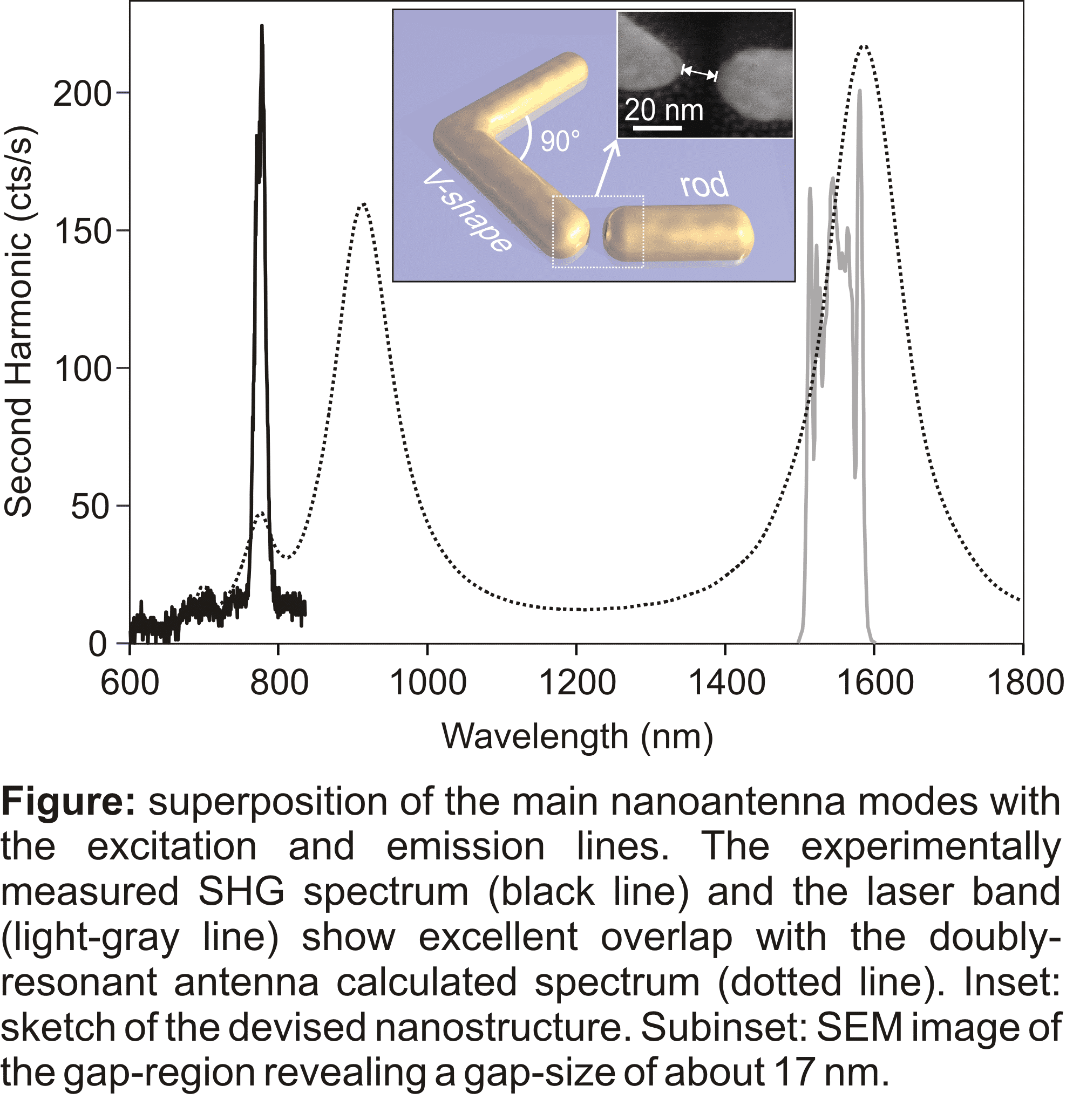
Mode-Matching in Multiresonant Plasmonic Nanoantennas for Enhanced Second Harmonic Generation
Second Harmonic Generation (SHG) is well known to be a powerful imaging tool for background-free and non-damaging live tissues investigation. Field enhancements in plasmonic nanostructures are often exploited to effectively compensate for the lack of phase-matching in confined volumes with the aim of obtaining brighter nanoscale nonlinear probes. Recently, nanoantenna designs featuring a double resonance at both the excitation and the emission wavelengths have been proposed to improve SHG [1]. However, the high degree of symmetry in plasmonic materials at the atomic scale and in nanoantenna designs have so far limited SHG efficiency [2]. Here we report on especially engineered gold single-crystalline nanoantennas (see Figure inset) working in the near-infrared that show unprecedented SHG efficiency thanks to (i) a multi-resonant response occurring at both the excitation and SH wavelength, (ii) a significant spatial overlap of the localized fields at the wavelengths of interest and (iii) a broken-symmetry geometry to achieve dipole-allowed SHG. The effective combination of these key features in a single plasmonic antenna, characterized by the absence of local defects, allows optimizing SHG efficiency in a well-controlled fashion.
Once the antenna geometry is properly tuned to display a double resonance matching simultaneously the laser excitation (1560 nm) and the SHG wavelength (see Figure), it demonstrates a SHG efficiency βSH = PSH /PFW2 ≈ 5×10-5, which is well above the values reported in literature for the same spectral region. [3]
These results shed new light on the optimization of nanoscale SHG via metal nanoantennas, paving the way to a new class of tunable molecular sensing devices and nanoscale coherent light sources based on nonlinear plasmonic platforms.

[1] K. Thyagarajan et al., Opt. Express 20, 12860 (2012).
[2] M. Finazzi et al., Phys. Rev. B 76, 125414 (2007).
[3] H. Aouani et al., Nano Lett. 12, 4997 (2012).
paolo.biagioni@polimi.it
Powered by Eventact EMS